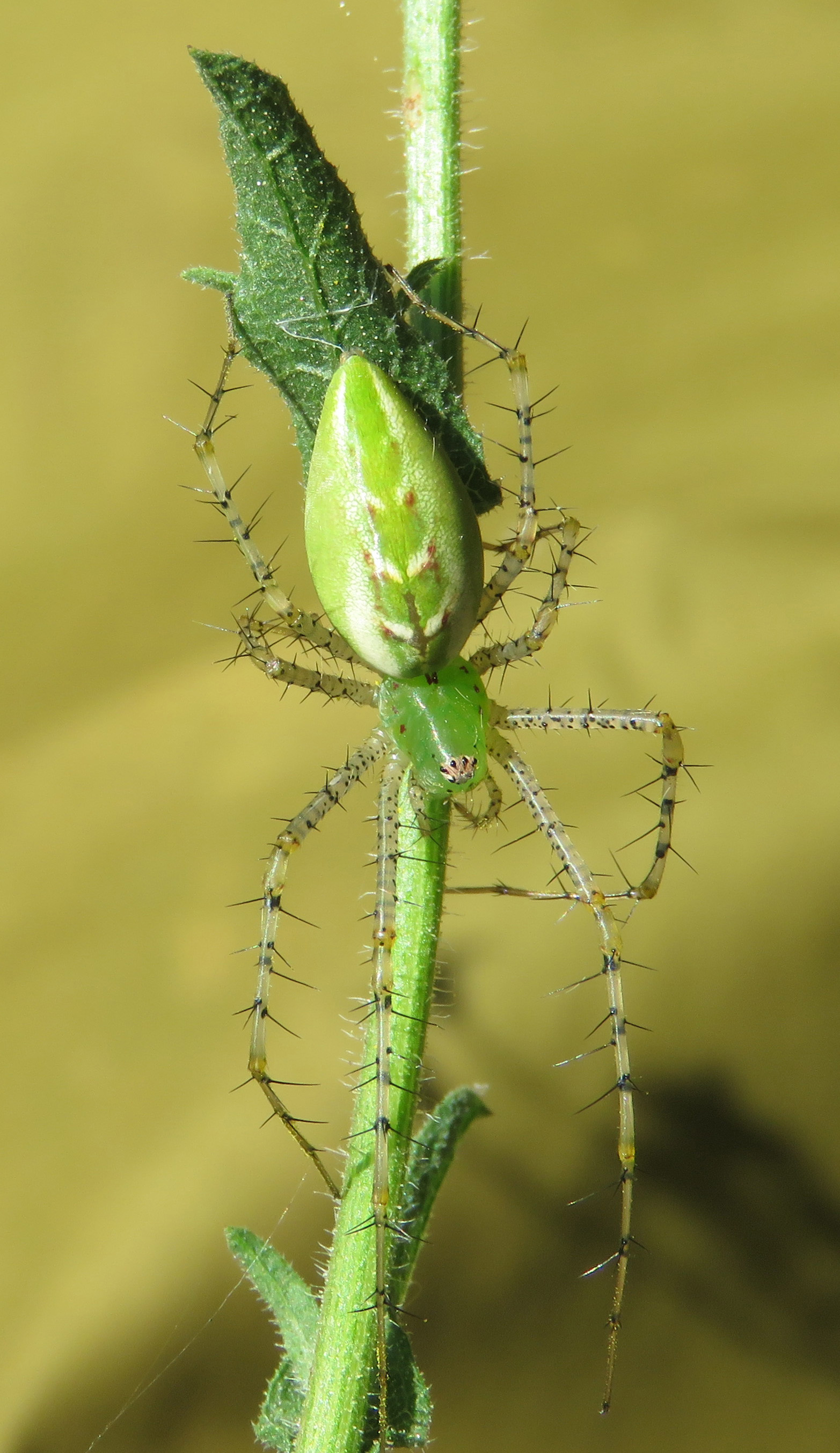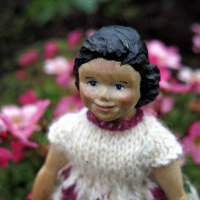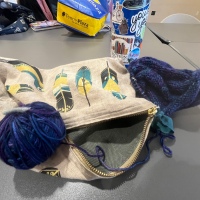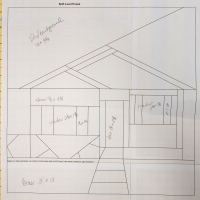Drawing the Threads Together
I have been wanting to do a series of still lifes based on favorite vintage items, from the kitchens of my grandmother, mom, and mother-in-law — things like teapots, recipe boxes, and figurines. But every time I try to draw a group of these things, I have problems fitting them on a page, and getting all the lines at the right angles and distances from each other.
So, inspired by an article called “Photo, Paint, Stitch” by Kelli Nina Perkins*, I decided to let the camera and the computer do the hard work of capturing arrangements and details for me, and for the last few weeks I have been absolutely obsessed with photo editing for fabric.
I hope to show many of the variations I tried in future posts, but today I will start with the one that uses the computer in the simplest way.
Here’s the photo I started with. In Photoshop Elements, I used the “poster edges” filter to emphasize the contour lines. That’s the extent of editing on this sample; I was ready to print.
However, I was out of printer fabric sheets. Fortunately these drawings of Grandma Lin’s reminded me that I could use regular cotton fabric for the background. I have read that you can iron freezer paper to the fabric, to give it enough stability to get through the printer, but that didn’t work for me. I ironed Heat & Bond fusible on to the back, left the paper backing on, and it ran through the printer great.
I really liked how the fabrics gave added detail to the image without overpowering it, and how, in different lights, the fabrics took on different looks.

I like the subtle effects that the two different fabrics give, and how they help unify foreground and background.
For this project, I picked the print on the right, with a white-on-white design for the base fabric. I peeled off the fusible backing, made a quilt sandwich, and did some free motion quilting around the image. The thread kept breaking, so I put a sheet of stabilizer on the back of the whole quilt sandwich, and that worked wonders. I added some decorative stitching to accent the centers of the flowers.
Then I added some Jacquard Lumiere paints to give more definition to the petals and leaves.

Especially on the red flower, you can see the white-on-white floral print of the background fabric coming through, making the surface more interesting.
The bottom of the picture was too bland, because the white pitcher was sitting on a white platter, so I repeated some of the flower colors in a color wash with Derwent Inktense watercolor pencils.
Two green borders looked okay, but too predictable. I had an 8 inch strip of batik scraps in the right colors, already pieced, so I slice that into 2 inch strips and used it as another border. Then I took a long string of pink beads that I have had forever, and stitched it on too.
The finished size is 14 inches by 17 inches.
I loved this project because I was able to use what I learned in earlier practice sessions with stabilizer, paints, and watercolor pencils; and I was able to use up some scraps.
I did not get very many big projects done this year, but I did accomplish my goal to take the time to try new techniques, and I am looking forward to doing more with these techniques in the new year.
* This article is from the July/August 2009 Cloth Paper Scissors magazine. It gives a lot of clear directions and design options, but I ended up using a different process than what is given there. Maybe I will get to those ideas soon.




















That picture is total genius!! Great colour combinations. The picture in the first group of the tea pot is my absolute favourite, tea freak 🙂 REAL strong tea and the handle of my dragon fly teapot broke this morning so maybe that is why it captured my attention.
Would love to see what you would do with that 🙂
Merry Christmas and the BEST of New Years to you and yours !!
Thanks! Glad you liked it. That green teapot was my grandmother’s — I don’t know the pattern name. But it is big and sturdy and I love it too, and I am looking forward to doing a piece based on it.
And Merry Christmas and Happy New Year to you too!
What an amazing piece! Beautiful!
Thank you. I have been practicing for a long time so it was fun to have a piece come together like that.
That is a gorgeous piece! Your work always amazes me!
Thank you, you are so kind! Once I got the technique down, it went pretty fast. I could easily skip all my chores and just keep making more! 🙂
It’s great that you actually went back and USED those old QA and other artistic magazines. And I love the idea of printing on printed fabric rather than plain white. I’ll have to see if my balky printer will accept this method. Your lovely piece is like a breath of spring.
Yes, you wouldn’t believe how relieved I feel just to actually try the ideas in those articles! I must have 20 notebooks full, plus the magazines that were too good to tear up.
My printer has a rear tray, and that’s where I put the fabric. I use a piece of card stock to support it – the card stock doesn’t go through but it seems to help the printer start feeding the fabric sheet through. Good luck if you try it!
You have inspired me to try this. I’ve used a lot of photo fabric in the printer and have had good luck but have never tried plain fabric. So guess this goes on my to-do list for 2015! I can see where using two layers of stabilizer on fabric would give it enough bulk to go thru the printer. Great idea an so pretty.
I don’t know what weight of stabilizer you use, but I would try just one layer first. When I am trying something new in the printer, I stay close and listen to it start through – if it starts crumpling, I grab it out before it jams! The article I read said to soak fabric in something called Bubble Jet Set 2000 (which I did find on Amazon), then let it dry, and then you can run it through the printer, but there is no way I would do that much prep! 🙂
I just love this post… I don’t often comment, though I do read all, but I had to this time. I am fascinated by all you do, but this is superb… Thank you for sharing your interests and your talent,
Merry Christmas from Australia
LOVE! There’s so much going on at every level, but somehow you’ve made it all into a coherent and delightful and balanced whole. I’m inspired.
This must’ve been such fun to do! I like all the connections–the nostalgia, the vintage, the family aspects–and the way you figured out how to accomplish what you envisioned, even though there were road blocks. I’ll look forward to seeing how this all evolves!
Soooo lovely. May your holidays Be Blessed, Safe and Enjoyable. Blessings Always, Mtetar
Peace and calm for the eyes. Thanks . . . and Merry Christmas. John
Thanks for liking my blog and you had a great work..
Wow! I love this piece! The subject reaches out to the part of me that loves things simple and nostalgic. The design work is beautiful and I love how the beads both separate and join the borders.
Oh, thanks, that is one of my favorite pieces! I have never done another one like it, even though I intended to. It’s on my endless to-do list! 🙂